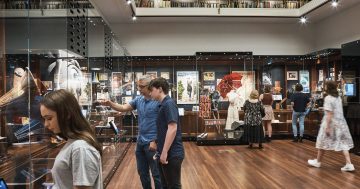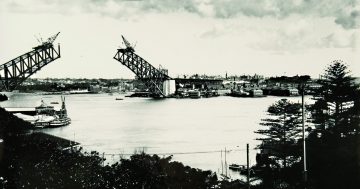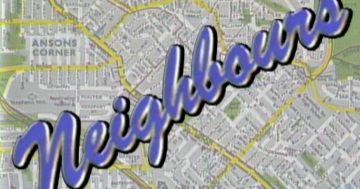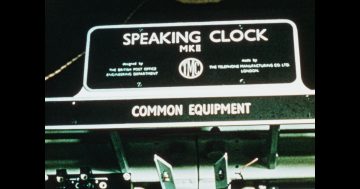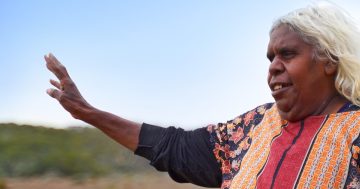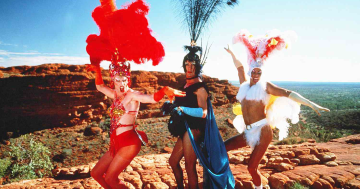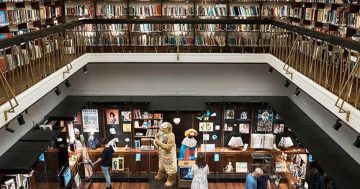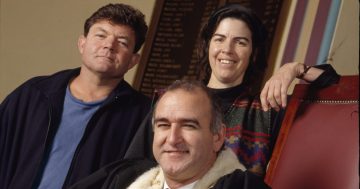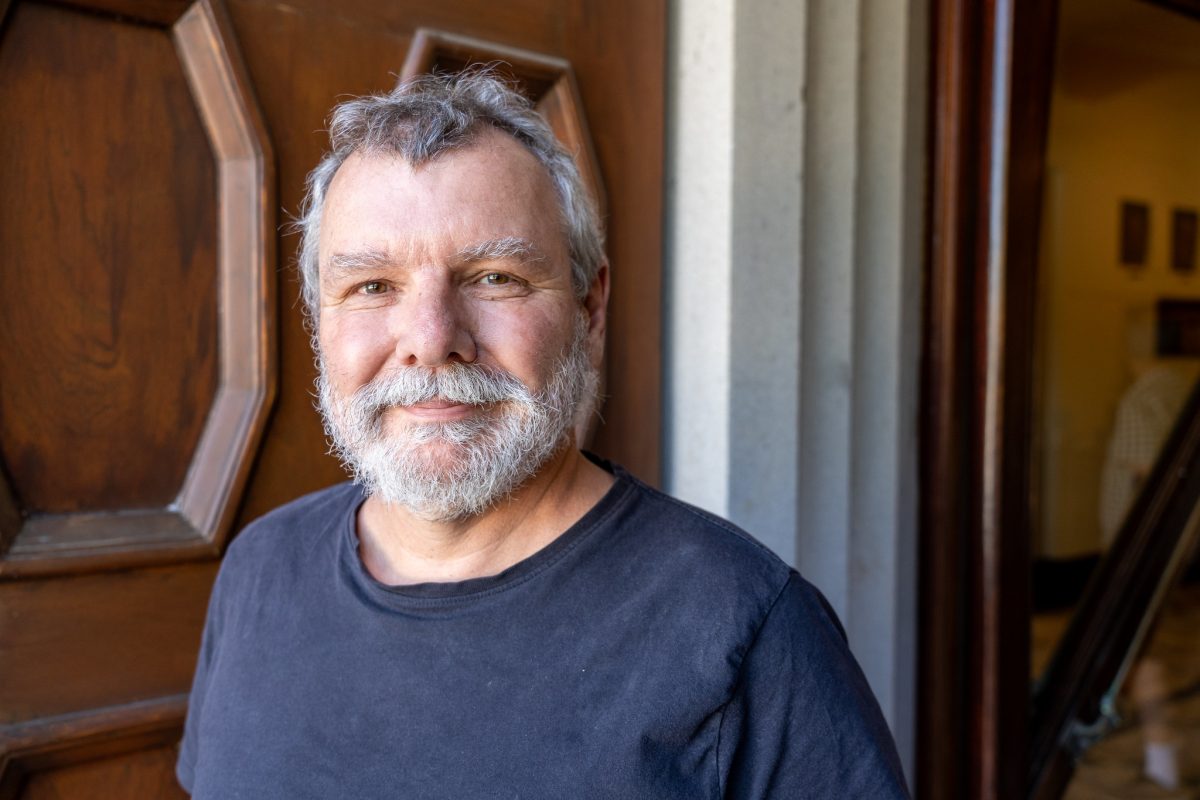
Thorsten Kaeding has helped curate the 2023 acquisitions for the NFSA – all 61,000 of them. Photo: NFSA.
It takes more than a year, about 25 curators – and the sort of record company, TV, radio and movie connections young stars can only dream about – to make it on to the National Sound and Film Archive’s (NFSA) “latest” list.
For 2023, it added a remarkable 61,000 items – from the comedy series Colin From Accounts to Kylie Minogue’s Padam Padam to that world women’s soccer match starring our Matildas. In between, it collected an AFL game – recorded for the first time in First Australians language – From The Embers, the Community Broadcasting Association of Australia podcast revisiting the towns impacted by the Black Summer bushfires, and an oral history about gender fluidity.
But perhaps the most significant aspect of the 2023 collection, according to NFSA curator Thorsten Kaeding, was the amount of gaming material it brought in.
Thorsten said it was being collected because as the industry continued to expand rapidly, the NFSA must respond to traditions in multimedia, new media and consumption in the 21st century.
“We started a trial to collect games in 2019,” he said. “We started the trial to see what sort of technical issues would be involved. The Australian gaming industry was very excited we had started this because for them, it was like a validation of their artform, that their games were worthy of preservation.
“After about a year, we decided it was important for us to do this because games form such an important part of our visual culture.”
2023 acquisitions include:
- Gubbins, the puzzle game from indie developer Studio Folly, described as “Solitaire meets Scrabble”;
- The Lightmap podcast from SIFTER, which explores what goes into making a video game;
- Horace Goes Skiing, the second instalment of the famous Horace series created by William Tang;
- Unique software demo disks for the Amiga computer featuring Steve Vizard and Derryn Hinch in a very unofficial capacity.
Radio was another significant acquisition for 2023, with 18,000 hours captured annually from stations across the country.
“We have a roster where we capture from commercial to public radio every year, we also do the same with news and current affairs – it’s been going since the mid-1980s,” he said.
The NFSA’s goal in capturing such a diverse form of media is to collect audio-visual stories that not only affect all Australians about Australia, but have this unique record safely stored, digitally, for future generations to access and learn about the nation of years gone by.
Thorsten said the next step was to look at collecting podcasts and social media – a task not for the faint-hearted.
“We’re looking at it, but there are obviously some technical issues and lots of rights issues. We’re having a good look at it and hopefully will see a way forward within 12 to 24 months.”
He said part of the NFSA’s challenge to collect our audio-visual history was the rapid way in which technology was ever-changing.
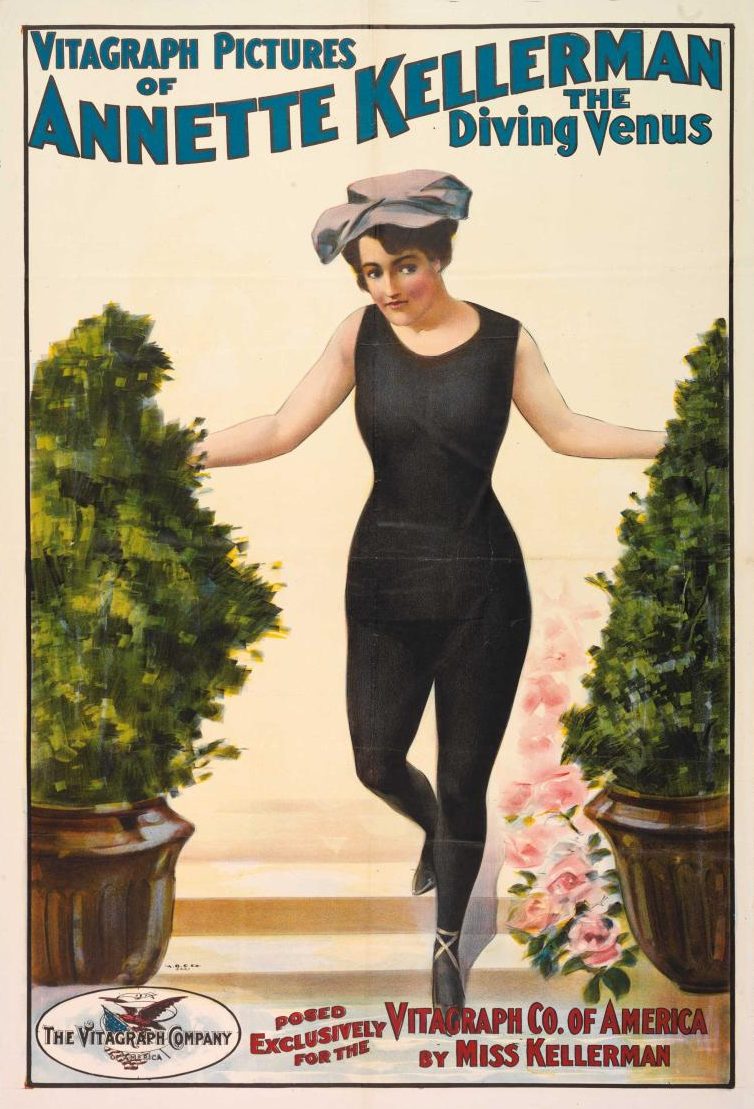
A rare poster shows champion swimmer and vaudeville star Annette Kellerman advertising her Vitagraph Pictures performance – one of the new NFSA acquisitions. Photo: NFSA.
“There is just so much growth out there now,” he said. “When we started out collecting TV, there were only four channels. Now all that has exploded with so much more, along with all the music, people self-publishing online – and now everyone has a recording studio on their laptop.
“What we have to do, and are doing, is expanding with that.
“Back in the day, podcasting and social media didn’t exist, now we have to constantly get new content for our collection so we can stay relevant – it never stops.”
NFSA chief executive officer Patrick McIntyre said the “incredible breadth of contemporary works” added to the national audio-visual collection over the past year and reflected the dynamism of today’s creators as well as the adventurous tastes of Australian audiences.
“Together with the historical artefacts that were also acquired, these items help us understand the nation we have become, and also help us to explain to future Australians the nation we are today.”
For a full list of the latest acquisitions, go to the NFSA website.












